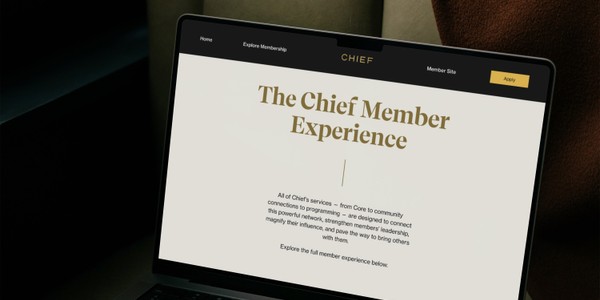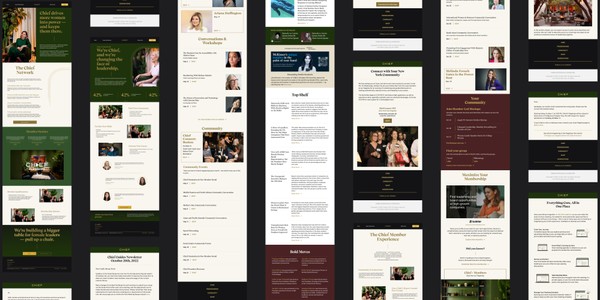Product Design Is Lost

The ongoing tech layoffs have decimated UX and UI positions to such a degree that some have wondered whether the tech world has fallen out of love with the field of design.
After several whirlwind years where design was hailed as the solution to everything, organizations are now deprioritizing design teams entirely. Executive-level design roles are slowly disappearing across corporate America. And even well-established practitioners within the design service industry were hit by the record layoffs that have swept through tech over the last two years.
These recent developments should serve as a wake up call to the field of product design, which I believe has lost its way a long time ago. Designers can bring immense value to the production of digital products, but our current product design practices too often fail to deliver value to both users and the organizations we serve. Designers have been painted into a corner and the only way out of this dead end is for our practices to evolve.
A process-heavy checklist
There was a time when ‘design thinking’ was everywhere. Companies believed that designers were the key to creating functional, accessible, and joyful digital experiences, which spurred huge interest in building internal design capabilities within organizations of all sizes. That’s how we saw a “design arms race” in hiring through Silicon Valley and beyond, and companies like IBM investing $100 million to open design labs around the globe.
The problem we face today, however, is that the promises at the heart of product design were never fully fulfilled. Instead of using this influence to create value for both businesses and users, product design teams have been relegated to a place full of formulaic processes that are mostly detached from the medium we’re designing for.
We’re filling our time with checklists instead of focusing on the very thing that makes designers relevant…
Design workflows at most tech companies follow an incredible number of structured tasks: for each project, designers must create user personas, user stories, journey maps, wireframes, user interviews, and much more. These concepts originated in the service design industry and initially helped facilitate a very human-focused design process – which, of course, is good.
However, driven by a desire from businesses to turn design into a process-heavy, measurable function, we’re filling our time with checklists instead of focusing on the very thing that makes designers relevant: our ability to propose new points of view and delight users with meaningful experiences. These core competences that were inherited from graphic design have been replaced with a poor man’s version of an anthropology major where the act of design is mostly based on averaging user opinions.
Design is both an objective and subjective art. But because of a persistent fear of making bad decisions, businesses have ended up leaning so heavily on objective measures that we have severely limited our ability to create meaningful impact within organizations.

Illustration by Lucas Dino Nolte
Breaking up with technology
Another reason why tech companies are falling out of love with product design teams is that the field of design has failed to embrace the technologies needed to build digital products. Many design teams seem reluctant to incorporate skills outside of a small ecosystem of design tools and techniques. This channels a core belief that engineering is somehow antithetical to the purpose of designing human-first experiences, and that design outcomes will worsen if technology is allowed to play a larger role early in the design process. I believe this mindset is misguided.
For years, I’ve argued the design profession – fueled by how we educate designers – operates on outdated ideas about the separation of labor. Designers are expected to come up with the ideas, while engineers are merely there to execute them. Design stays in a corner away from technology.
Design teams often follow these isolating practices despite strong indicators that successful digital products are made by teams that are deeply integrated with engineering. Not to mention, this waterfall approach to design slows down the work immensely. This is quite the paradox — one might wonder what design teams are spending so much time on that justifies being so detached from the technology they’re designing for.
Many designers and design teams now find themselves in a place between strategy and implementation, yet they are not fully empowered to influence either.
In 2020, a large study of design leaders showed that a majority of companies have failed to embrace design at the highest organizational levels despite the recent emergence of the “chief design officer” position. It should come as no surprise then that we’re seeing fewer design leaders exerting much influence. I believe a significant reason for this is that we find ourselves squeezed into a corner.
Many designers and design teams now find themselves in a place between strategy and implementation, yet they are not fully empowered to influence either. As soon as a digital product takes its initial step towards becoming real, designers are relegated to the role of advisors without the necessary tools to challenge assumptions at the C-suite level. Even worse, this dynamic greatly limits the places where designers can make an impact, likely fueling the current monoculture in digital product design. Add record-breaking layoffs across multiple sectors to the mix, and we’re seeing designers’ bargaining power within organizations all but diminish.
This has all served to limit our potential for far too long, but I remain convinced that there is a bright future for product design that is fueled by a change in attitude and a new set of core competencies that deliver on the promise of placing design at the heart of a digital business. It’s certainly needed.











